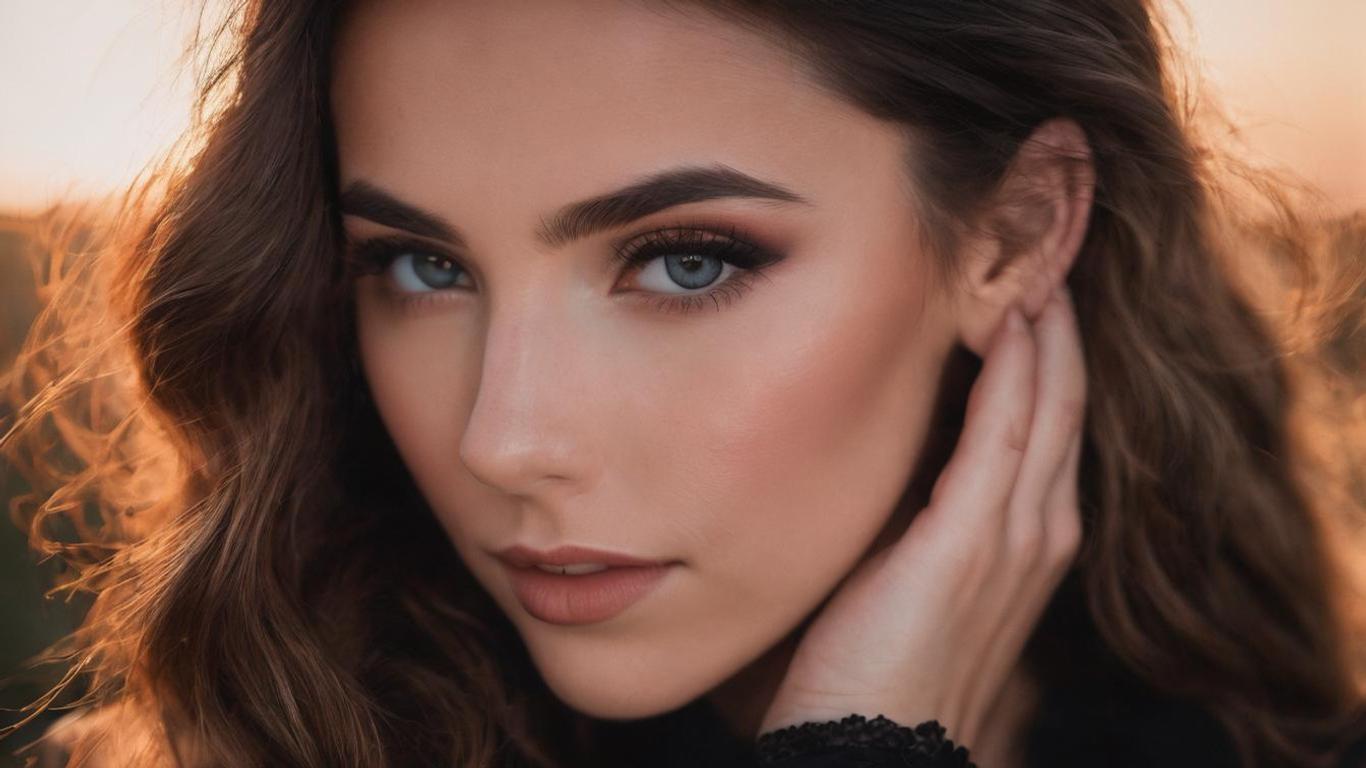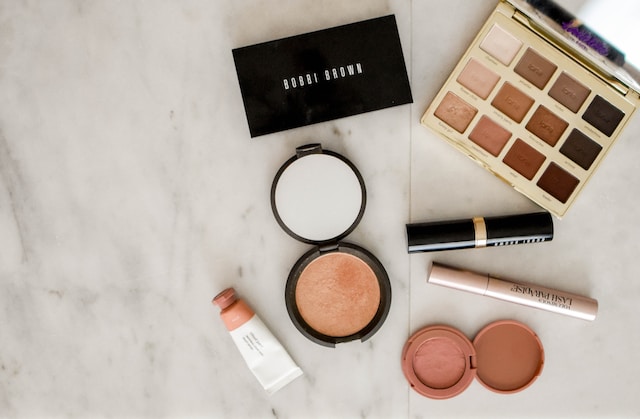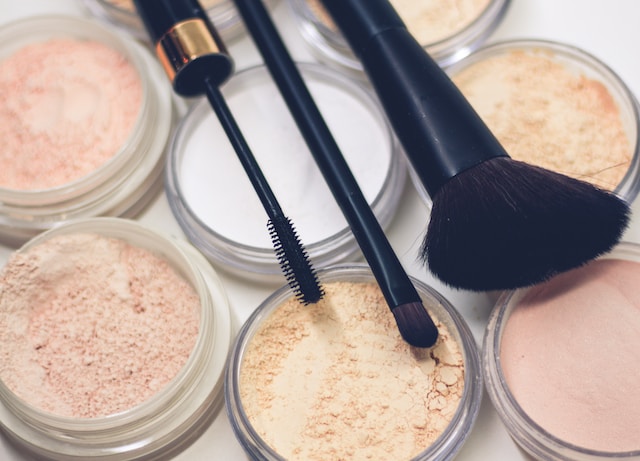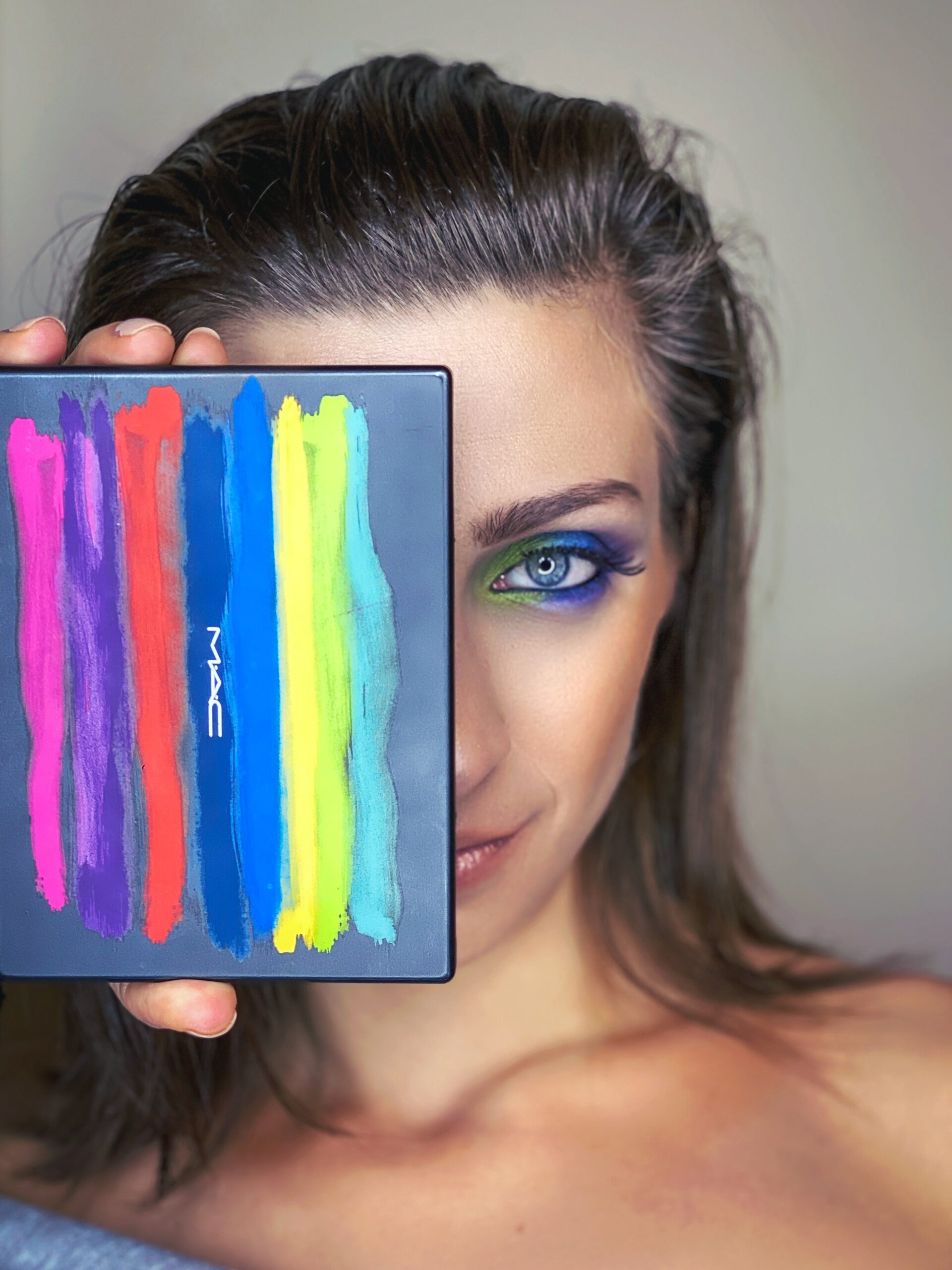Contents
- 1 Understanding Your Skin: Identifying Your Skin Type and Undertones
- 2 Prepping Your Canvas: Skincare Routine for a Flawless Makeup Application
- 3 Choosing the Right Foundation: Finding Your Perfect Shade and Formula
- 4 Concealing and Correcting: Tips for Hiding Imperfections and Enhancing Features
- 5 Mastering the Art of Blending: Applying and Blending Eyeshadow like a Pro
- 6 Enhancing Your Eyes: Eyeliner and Mascara Techniques for Beginners
- 7 Achieving a Natural Glow: Highlighting and Contouring for a Sculpted Look
- 8 Perfecting Your Pout: Lipstick Application Tips for a Polished Finish
- 9 Setting Your Makeup: Techniques for Long-Lasting and Smudge-Proof Results
- 10 Removing and Caring for Your Makeup: Proper Techniques for a Healthy Skin
Understanding Your Skin: Identifying Your Skin Type and Undertones
When it comes to achieving a flawless makeup application, understanding your skin type and undertones is essential. Your skin type will help you determine the right skincare products and makeup formulas that will work best for you. There are four main skin types: oily, dry, combination, and normal. Oily skin tends to produce excess sebum, leading to shine and potential breakouts, while dry skin lacks moisture and may feel tight and rough. Combination skin is a combination of both oily and dry areas, while normal skin is well-balanced and neither too oily nor too dry. Identifying your skin type will allow you to tailor your skincare routine and makeup choices to address specific concerns and enhance your natural beauty.
In addition to your skin type, understanding your undertones is crucial for selecting the right foundation shade and other makeup products. Undertones are the subtle hues beneath the surface of your skin that can be categorized as cool, warm, or neutral. Cool undertones have a pink or blueish tint, warm undertones have a yellow or golden hue, and neutral undertones are a balance of both. Determining your undertones will help you choose a foundation shade that complements your skin, as wearing a shade that is too cool or too warm can result in an unnatural and mismatched appearance. By identifying your undertones, you can achieve a seamless and natural-looking base for your makeup.
• Understanding your skin type is crucial for selecting the right skincare products and makeup formulas.
• The four main skin types are oily, dry, combination, and normal.
– Oily skin produces excess sebum and can lead to shine and breakouts.
– Dry skin lacks moisture and may feel tight and rough.
– Combination skin has both oily and dry areas.
– Normal skin is well-balanced, neither too oily nor too dry.
• Identifying your skin type allows you to customize your skincare routine to address specific concerns.
• Undertones play a significant role in choosing the right foundation shade and other makeup products.
• Undertones can be categorized as cool, warm, or neutral.
– Cool undertones have a pink or blueish tint.
– Warm undertones have a yellow or golden hue.
– Neutral undertones are a balance of both cool and warm tones.
• Determining your undertones helps you find a foundation shade that complements your natural complexion.
Prepping Your Canvas: Skincare Routine for a Flawless Makeup Application
Before applying makeup, it is essential to establish a skincare routine that will provide the ideal canvas for a flawless application. Skin type plays a significant role in determining the products and techniques that will work best for you. Understanding your skin type will help you choose the right cleansers, toners, moisturizers, and treatments that address your specific needs. Whether you have oily, dry, combination, or sensitive skin, tailoring your skincare routine accordingly will ensure that your makeup goes on smoothly and lasts longer throughout the day.
In addition to considering your skin type, it is also important to identify your undertones. Undertones are the subtle hues that lie beneath the surface of your skin and can greatly impact how certain makeup colors appear on you. Undertones are generally classified into three categories: warm, cool, and neutral. Warm undertones have more golden or yellow hues, while cool undertones lean towards pink or blue tones. Neutral undertones have a balance of both warm and cool hues. Knowing your undertones will help you choose the right foundation shade, blush, and even lipstick colors that complement your complexion and enhance your natural beauty.
• Determine your skin type: oily, dry, combination, or sensitive
• Choose the appropriate cleanser, toner, moisturizer, and treatments for your specific needs
• Tailor your skincare routine to address your skin type and concerns
• Identify your undertones: warm, cool, or neutral
• Consider how certain makeup colors will appear on your skin based on undertones
• Select foundation shades that complement your complexion
• Choose blush and lipstick colors that enhance your natural beauty
Choosing the Right Foundation: Finding Your Perfect Shade and Formula
One of the most important steps in achieving a flawless makeup application is finding the right foundation that matches your skin tone and suits your skin type. With the wide range of foundation shades and formulas available, it can sometimes be overwhelming to navigate through the options. However, taking the time to determine your perfect shade and formula will make a significant difference in the overall appearance and longevity of your makeup.
To find your perfect foundation shade, start by determining your skin’s undertone. Undertones are the subtle hues that are underneath the surface of your skin and can be categorized as cool, warm, or neutral. Cool undertones have a pink or bluish tint, while warm undertones have a yellow or golden hue. Neutral undertones have a balance of both cool and warm tones. Identifying your undertone will help you narrow down the foundation shades that will best complement your complexion. Additionally, consider the coverage and finish you desire. From sheer to full coverage and dewy to matte finishes, there is a foundation formula to suit every preference. Experimenting with different shades and formulas will ultimately lead you to discover the perfect foundation for your skin.
• Start by determining your skin’s undertone: cool, warm, or neutral
• Cool undertones have a pink or bluish tint
• Warm undertones have a yellow or golden hue
• Neutral undertones have a balance of cool and warm tones
• Identifying your undertone will help narrow down foundation shades that complement your complexion
• Consider the coverage and finish you desire: sheer to full coverage, dewy to matte finishes
• Experiment with different shades and formulas to find the perfect foundation for your skin
Concealing and Correcting: Tips for Hiding Imperfections and Enhancing Features
When it comes to achieving flawless-looking skin, concealing and correcting imperfections is a crucial step in your makeup routine. Whether you have dark circles, blemishes, or uneven skin tone, the right techniques can help you hide these imperfections and enhance your best features. One of the key tips for effective concealing is to start with a color corrector. Color correcting involves using specific shades to neutralize and counteract the color of the imperfections. For example, green color corrector can be used to cancel out redness, while peach or orange shades can minimize the appearance of dark circles.
In addition to color correcting, using the right concealer is essential for a flawless finish. Opt for a concealer that matches your skin tone or is one shade lighter to brighten the area. Apply the concealer using a small brush or your fingertips, gently patting it onto the problem areas. Be sure to blend the concealer well into your skin to avoid any harsh lines or patches. To set the concealer and ensure long-lasting coverage, lightly dust a translucent powder over the concealed areas using a fluffy brush. Remember, the key to concealing and correcting is to use minimal product and build up the coverage gradually for a natural-looking result.
• Start with a color corrector to neutralize imperfections
• Use green color corrector to cancel out redness
• Peach or orange shades can minimize the appearance of dark circles
• Choose a concealer that matches your skin tone or is one shade lighter
• Apply concealer using a small brush or fingertips, patting it onto problem areas
• Blend the concealer well into your skin to avoid harsh lines or patches
• Set the concealer with translucent powder for long-lasting coverage
• Use minimal product and build up coverage gradually for a natural-looking result
Mastering the Art of Blending: Applying and Blending Eyeshadow like a Pro
Applying and blending eyeshadow can seem daunting, especially when you’re aiming for professional-looking results. However, with the right techniques and a little practice, you can master the art of blending like a pro. The key to achieving a seamless and blended eyeshadow look is to start with a good eyeshadow primer. This step will ensure that your eyeshadow stays in place, without creasing or fading, throughout the day. Simply apply a small amount of primer onto your eyelids and gently blend it out using your fingertip or a brush. This step will not only enhance the color payoff of your eyeshadows but also help them blend effortlessly.
Once your primer is in place, it’s time to choose the shades that will create your desired eyeshadow look. A general rule of thumb is to use three shades: a light shade for highlighting the brow bone and inner corner, a medium shade for the lid, and a darker shade for the crease. Using a fluffy blending brush, start by applying the medium shade all over your lid in gentle back-and-forth motions. This will create a smooth base and ensure even distribution of color. Next, take the darker shade and apply it to the crease, focusing on the outer corner and blending it towards the center. This will add dimension and depth to your eye makeup. Finally, take the light shade and apply it to the brow bone and inner corner to highlight and brighten the eyes. To achieve a seamless blend, use gentle windshield wiper motions with your blending brush to soften any harsh lines between the shades. Remember, practice makes perfect, so don’t be afraid to experiment with different shades and techniques until you find the perfect blend for you.
• Start with a good eyeshadow primer to ensure long-lasting and crease-free results
• Apply the primer onto your eyelids and blend it out using your fingertip or a brush
• Choosing three shades – light, medium, and dark – will create dimension in your eyeshadow look
• Use a fluffy blending brush to apply the medium shade all over the lid for an even base of color
• Apply the darker shade to the crease, focusing on the outer corner and blending towards the center for depth
• Highlight and brighten by applying the light shade to the brow bone and inner corner of your eyes
• Soften any harsh lines between shades by using gentle windshield wiper motions with your blending brush
• Don’t be afraid to experiment with different shades and techniques until you achieve your desired blend
Enhancing Your Eyes: Eyeliner and Mascara Techniques for Beginners
Eyeliner and mascara are essential tools for enhancing the eyes and creating a more captivating look. When it comes to eyeliner, beginners often struggle with achieving a smooth and precise line. To make it easier, start by using a pencil eyeliner with a soft and creamy texture. Gently draw small dots or dashes along the lash line, and then connect them using short strokes. This technique allows for better control and helps to create a seamless line that defines the eyes. For a more dramatic effect, you can extend the line slightly beyond the outer corner of the eye, creating a subtle flick.
Mascara plays a crucial role in opening up the eyes and making lashes appear longer and fuller. Beginners should opt for a lengthening or volumizing mascara formula, depending on their desired effect. To apply mascara, start by gently wiggling the wand at the base of your lashes to ensure even coverage from root to tip. Then, using a zigzag motion, sweep the wand upward, coating the lashes for maximum impact. For an extra boost, you can further enhance the lashes by curling them with an eyelash curler before applying mascara. Remember to apply mascara to both the upper and lower lashes to create a balanced and unified look.
• Use a pencil eyeliner with a soft and creamy texture
• Draw small dots or dashes along the lash line
• Connect the dots using short strokes for better control
• Extend the line slightly beyond the outer corner of the eye for a dramatic effect
• Opt for a lengthening or volumizing mascara formula depending on desired effect
• Gently wiggle the wand at the base of lashes to ensure even coverage
• Use a zigzag motion to sweep the wand upward, coating lashes
• Curl lashes with an eyelash curler before applying mascara for extra boost
• Apply mascara to both upper and lower lashes for balanced look
Achieving a Natural Glow: Highlighting and Contouring for a Sculpted Look
Highlighting and contouring are techniques that have become popular in the world of makeup, allowing individuals to enhance their features and create a sculpted look. Highlighting involves applying a lighter shade of makeup to areas of the face where light naturally hits, such as the high points of the cheekbones, down the bridge of the nose, and on the cupid’s bow of the lips. This technique helps to bring forward those areas, giving the face a subtle, radiant glow. On the other hand, contouring involves using a darker shade of makeup to create shadows and dimension, giving the illusion of a more defined face shape. By strategically applying contour to the hollows of the cheeks, along the jawline, and at the temples, individuals can achieve a more sculpted appearance.
To achieve a natural glow through highlighting and contouring, it is important to choose the right products and shades that complement your skin tone. Opt for a highlighter that is not too shimmery or frosty, as this can give a more unnatural appearance. Instead, look for a highlighter with a subtle sheen that blends seamlessly into the skin. When it comes to contouring, select a shade that is slightly darker than your natural skin tone, but still within a similar undertone. This will ensure a more natural-looking shadow and avoid a stark contrast that can look harsh. Remember, the key to a successful highlighting and contouring routine is to blend, blend, blend! Use a soft, fluffy brush or a damp beauty sponge to seamlessly blend the products into the skin for a flawless, sculpted finish.
• Highlighting involves applying a lighter shade of makeup to areas where light naturally hits the face
• Contouring uses a darker shade of makeup to create shadows and dimension for a more defined face shape
• Choose highlighter with a subtle sheen that blends seamlessly into the skin for a natural glow
• Select a contour shade slightly darker than your natural skin tone, but within the same undertone
• Blend products using a soft, fluffy brush or damp beauty sponge for a flawless finish
Perfecting Your Pout: Lipstick Application Tips for a Polished Finish
Lipstick is a key component of a polished makeup look, adding a pop of color and enhancing the allure of your pout. To achieve a flawless application, start by prepping your lips. Gently exfoliate them with a lip scrub or a soft toothbrush to remove any dry skin, then apply a hydrating lip balm to ensure a smooth canvas. This will not only help your lipstick glide on effortlessly but also keep your lips moisturized throughout the day.
Once your lips are prepped and moisturized, it’s time to choose the right shade of lipstick. Consider your skin tone and undertones to find the most flattering color for you. If you have fair or cool undertones, opt for pink or berry hues. Warm undertones pair beautifully with peachy or coral shades, while deeper skin tones can rock bold, rich colors like reds and plums. Remember to also take into account the occasion and your personal style when selecting your lipstick shade.
Now that you’ve chosen the perfect lipstick, it’s time to apply it like a pro. Start by outlining your lips with a lip liner in a shade similar to your lipstick. This will create definition and prevent the color from bleeding outside the natural lip line. Then, fill in your lips with the lipstick, either directly from the bullet or using a lip brush for more precision. For a long-lasting finish, blot your lips with a tissue and lightly powder them before applying a second coat. Don’t forget to purse your lips onto a blotting paper to remove any excess product and ensure a neat, polished look.
• Gently exfoliate your lips with a lip scrub or soft toothbrush to remove dry skin
• Apply a hydrating lip balm for a smooth canvas and moisturized lips
• Consider your skin tone and undertones when choosing a lipstick shade
• Fair or cool undertones look great with pink or berry hues
• Warm undertones pair well with peachy or coral shades
• Deeper skin tones can rock bold, rich colors like reds and plums
• Take into account the occasion and personal style when selecting lipstick shade
• Outline your lips with a lip liner in a similar shade to prevent bleeding outside the natural lip line
• Fill in your lips with lipstick directly from the bullet or use a lip brush for precision
• Blot your lips with tissue and lightly powder them before applying second coat for long-lasting finish
• Purse your lips onto blotting paper to remove excess product
Setting Your Makeup: Techniques for Long-Lasting and Smudge-Proof Results
Setting your makeup properly is crucial to ensure it stays put throughout the day and remains smudge-proof. One effective technique is to use a setting spray. After applying your makeup, lightly mist the setting spray over your face in a sweeping motion. This will help lock in your foundation, concealer, and other products, preventing them from budging or melting off. Additionally, setting sprays can also provide a natural and dewy finish, giving your skin a radiant glow.
Another technique for long-lasting and smudge-proof makeup is applying a setting powder. After you have finished your base makeup, lightly dust a translucent setting powder over your face using a fluffy brush. Concentrate on areas prone to oiliness or where you have applied concealer, as these areas are more likely to crease or smudge. The setting powder will help absorb excess oil and set your foundation and concealer, allowing them to stay in place for an extended period without budging. Moreover, the powder will create a smooth and matte finish, giving your makeup a polished look.
• Use a setting spray to lock in your makeup and prevent it from budging or melting off.
• Lightly mist the setting spray over your face in a sweeping motion after applying your makeup.
• Setting sprays can also provide a natural and dewy finish, giving your skin a radiant glow.
• Apply a translucent setting powder after finishing your base makeup to make it long-lasting and smudge-proof.
• Use a fluffy brush to lightly dust the powder over your face, focusing on oily areas or where you applied concealer.
• The setting powder will absorb excess oil and set your foundation and concealer, keeping them in place for longer periods without creasing or smudging.
• It will also create a smooth and matte finish, giving your makeup a polished look.
Removing and Caring for Your Makeup: Proper Techniques for a Healthy Skin
Once you’ve achieved your desired makeup look, it’s just as important to properly remove and care for your skin. Neglecting this step can lead to clogged pores, breakouts, and overall skin irritation. To ensure a healthy complexion, start by using a gentle cleanser to remove makeup. Look for products specifically designed to remove makeup, as they are formulated to effectively dissolve and lift away even stubborn, long-lasting products. Gently massage the cleanser onto your skin using circular motions, focusing on areas where makeup tends to accumulate, such as the T-zone and around the eyes. Rinse thoroughly with lukewarm water to remove any traces of makeup and residue, and pat your skin dry with a soft towel. Avoid rubbing your face vigorously, as this can cause irritation and redness.
After cleansing, follow up with a hydrating toner to further purify your skin and restore its natural pH balance. Toners can help to remove any remaining traces of makeup and dirt, while also prepping your skin for the next steps in your skincare routine. Apply the toner onto a cotton pad and gently swipe it across your face, avoiding the delicate eye area. Allow the toner to fully absorb into your skin before moving on to the next step. To complete your makeup removal and skincare routine, apply a moisturizer suitable for your skin type to nourish and hydrate your skin. Opt for lightweight, non-comedogenic formulas that won’t clog your pores. Massage the moisturizer in upward, circular motions to promote absorption, and let it fully penetrate before moving on to other skincare products or heading to bed.
– Use a gentle cleanser specifically designed to remove makeup
– Gently massage the cleanser onto your skin using circular motions
– Focus on areas where makeup tends to accumulate, such as the T-zone and around the eyes
– Rinse thoroughly with lukewarm water to remove any traces of makeup and residue
– Pat your skin dry with a soft towel instead of rubbing vigorously
– Follow up with a hydrating toner to further purify your skin and restore its natural pH balance
– Apply the toner onto a cotton pad and gently swipe it across your face, avoiding the delicate eye area
– Allow the toner to fully absorb into your skin before moving on to the next step
– Apply a moisturizer suitable for your skin type after cleansing and toning
– Choose lightweight, non-comedogenic formulas that won’t clog pores
-Massage the moisturizer in upward, circular motions for better absorption




